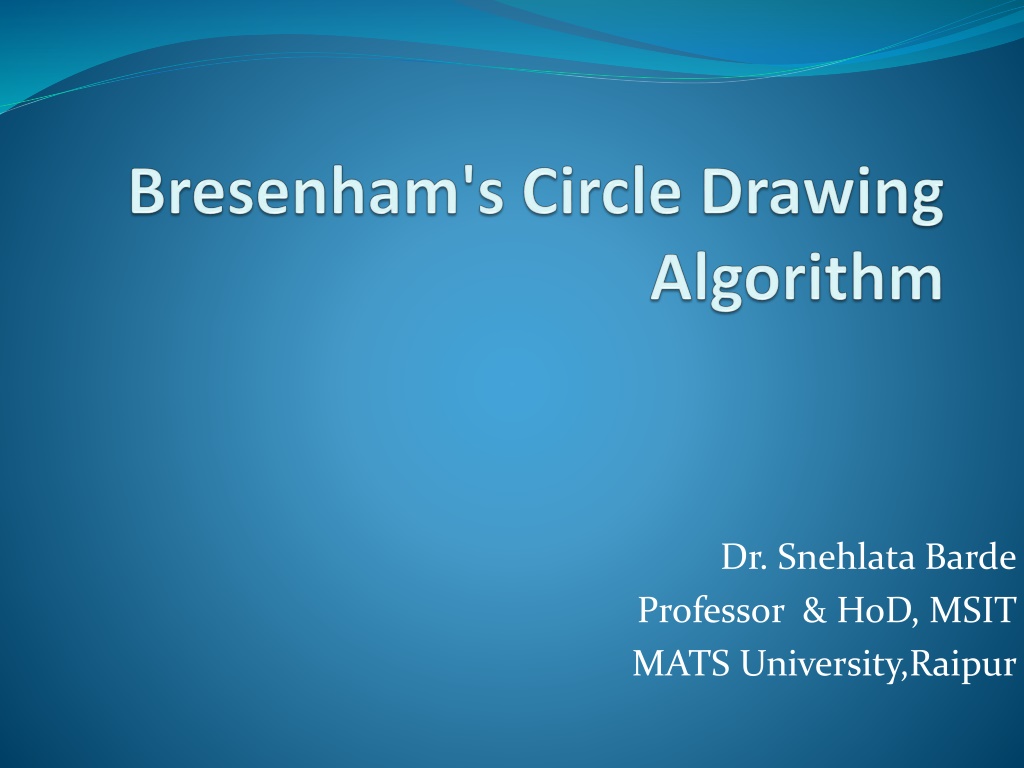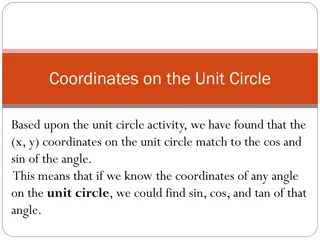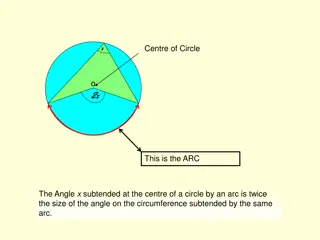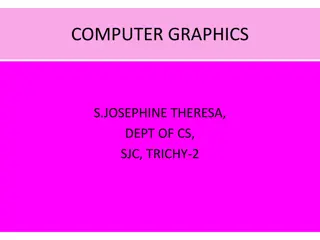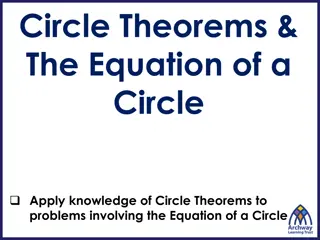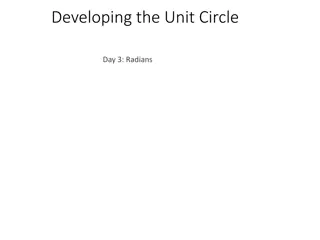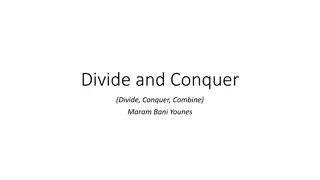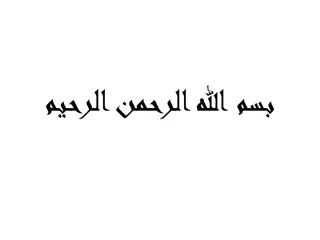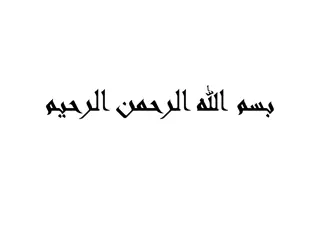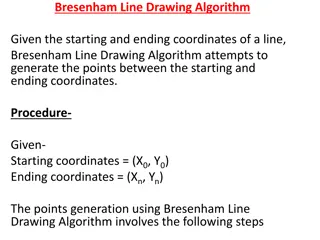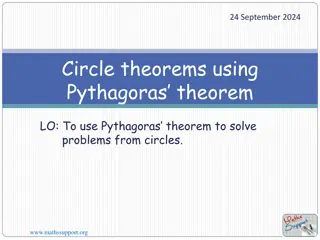Bresenham's Circle Drawing Algorithm Explained
Bresenham's Circle drawing algorithm is a fast and efficient method for drawing circles using integer arithmetic. It divides the circle into octants and selects the nearest pixel positions to create smooth arcs. This algorithm is widely used for graphics applications due to its speed and accuracy.
Download Presentation

Please find below an Image/Link to download the presentation.
The content on the website is provided AS IS for your information and personal use only. It may not be sold, licensed, or shared on other websites without obtaining consent from the author. Download presentation by click this link. If you encounter any issues during the download, it is possible that the publisher has removed the file from their server.
E N D
Presentation Transcript
Dr. Snehlata Barde Professor & HoD, MSIT MATS University,Raipur
Contents:- Bresenham's Circle Drawing Algorithm Introduction Algorithm Example
Introduction : Introduction Bresenham's Circle drawing algorithm is a circle drawing algorithm that selects the nearest pixel position to complete the arc. The Unique part of these algorithms is that is uses only integer arithmetic makes it significantly, faster than other algorithms using floating point arithmetic in Classical processors.
Algorithm : As per Eight way symmetry property of Circle, circle can be divided into 8 octants each of 45 degree. The following image illustrates the 8 octants with corresponding pixel
Process:- Given- Centre point of Circle = (X,Y) Radius of Circle = R Equation of circle X2+Y2=R2
Wr woerk on 90 to 45 octant Step-01: Assign the starting point coordinates (X , Y) as- X = 0 Y = R Step-02: Calculate the value of initial decision parameter d as - d = 3 - 2 * R
Step-03: Assume, the initial coordinates are (X , Y) The next coordinates will be (Xk , Yk) Now, we will find the next point of the first octant according to the value of the decision parameter (dk). Step-04: Now, we follow two cases- Case 1: If dk < 0
Then Case 2: If dk >= 0 then yk = Y - 1 dk = d + 4(Xk - Yk) + 10 Xk = X + 1 Yk = Y dk = (d + 4 * Xk + 6) xk = X +1
Step-05: If the center coordinates (X , Y) is not at the origin (0, 0), then we will draw the points as follow- X coordinate = Xc + X Y coordinate = Yc + Y {Xc and Yc represents the current value of X and Y coordinate} Step-06: We repeat step 4 and 5 until we get x>=y.
Example : Question : The radius of a circle is 8, and center point coordinates are (0, 0). Apply bresenham s circle drawing algorithm to plot all points of the circle. Solution : Step 1: The given stating points of the circle (x1, y1) = (0, 8) Radius of the circle (r) = 8
Step 2: Now, we will assign the starting point (x1, y1) as follows- x1 = 0 y1 = r (radius) = 8 Step 3: Now, we will calculate the initial decision parameter (d0) d0 = 3 2 x r d0 = 3 2 x 8 d0 = -13
Step 4: The value of initial parameter d0 < 0. So, case 1 is satisfied. Thus, Xk = X + 1 = 0 + 1 = 1 Yk = Y = 8 dk = d + 4 * Xk + 6 = 13 + (4 x 1) + 6 = 3 Step 5: The center coordinates are already (0, 0) so we will move to next step. Step 6: 13 + (4 x 1) + 6 = 3 Follow step 4 until we get x >= y.
Table for all points of octant 1 : d0 dk (Xk, Yk) (0,8) (1,8) (2,8) (3,7) (4,6) (5,5) -13 -3 11 -3 11 5 7 5 7
Now, the points of octant-2 are obtained using the mirror effect by swapping X and Y coordinates. Octant-1 Points Octant-2 Points (0, 8) (1, 8) (2, 8) (3, 7) (4, 6) (5, 5). (8, 0) These are all points for Quadrant-1. Here, all the points have been generated with respect to quadrant-1- (5, 5) (6, 4) (7, 3) (8, 2) (8, 1)
Quadrant-1 Quadrant-2. Quadrant-3. Quadrant-4 (X , Y) (-X ,Y) (-X,-Y) (X,-Y) (0 , 8) (0 , 8) (0 ,-8) (0, -8) (1 , 8) (-1 ,8) (-1 ,-8) (1 , -8) (2 , 8) (-2 ,8) (-2 , -8) (2 , -8) (3 , 7) (-3 ,7) (-3 , -7) (3 , -7) (4 , 6) (-4 ,6) (-4 , -6) (4 , -6) (5 , 5) (-5 ,5) (-5 , -5) (5 , -5) (6 , 4) (-6 ,4) (-6 , -4) (6 , -4) (7 , 3) (-7 ,3) (-7 , -3) (7 , -3) (8 , 2) (-8 ,2) (-8 , -2) (8 , -2) (8 , 1) (-8 ,1) (-8 , -1) (8 , -1) (8 , 0) (-8 ,0) (-8 , -0) (8 , 0) These are all points of the Circle.
